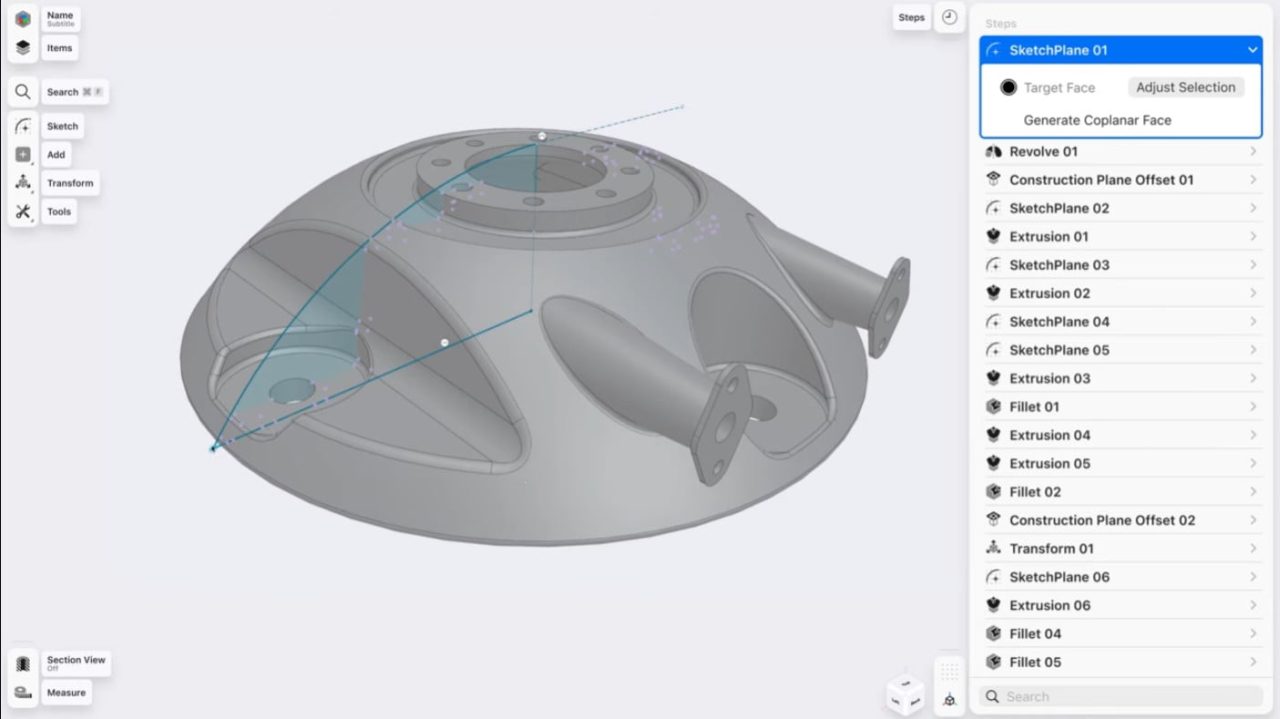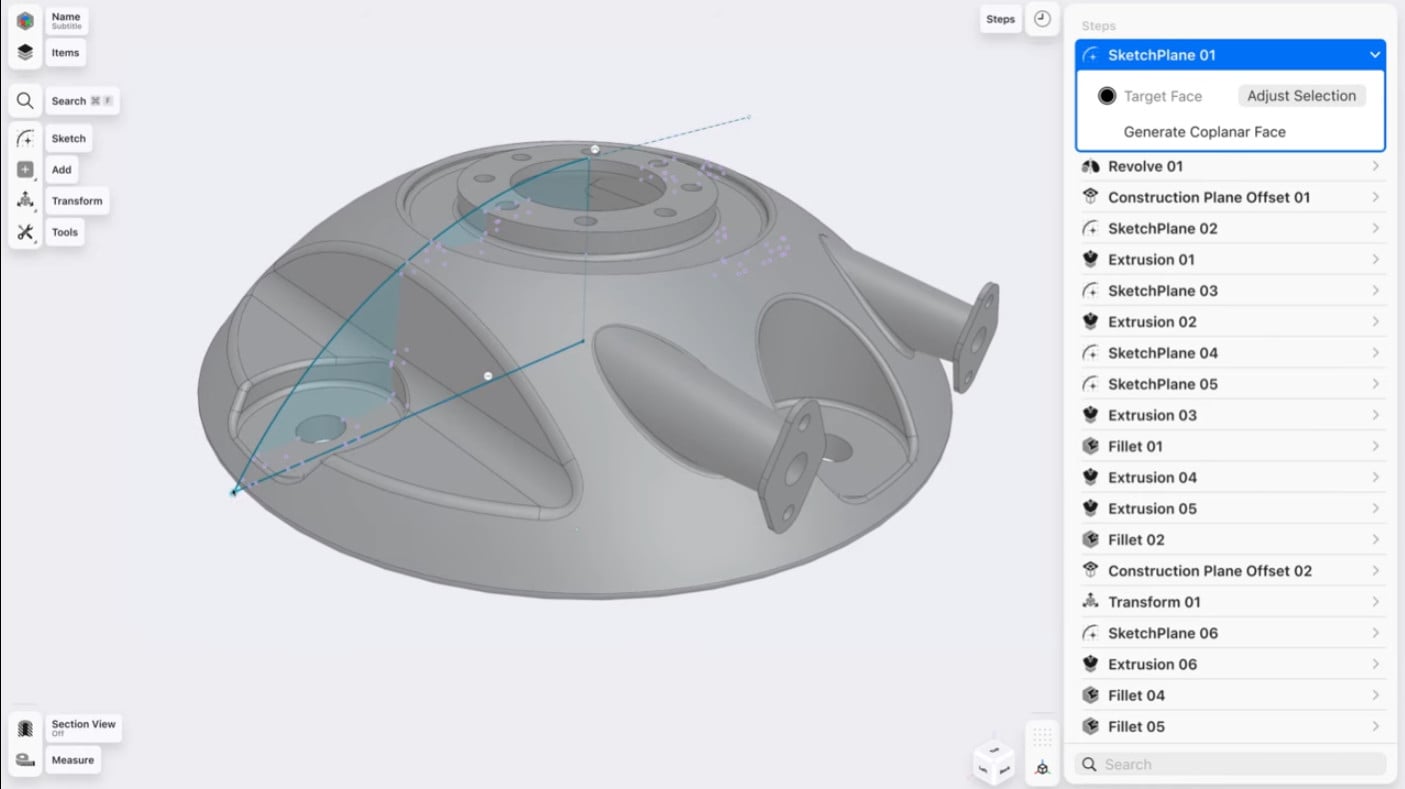
Hungarian CAD company is completing its comparison to market leaders.
Shapr3D is added history-based modeling, according to the company’s online 2023 Summer Product Tour.
This may seem odd for a CAD program that was conceived to be so easy to use that it barely needed an interface. That’s how it was introduced in a 2018 TEC Talk in San Francisco by István Csanády, who with an iPad and a Pencil, proceeded to create solid models. This was no Etch A Sketch but a real Parasolid-based CAD program. It was so quick and so nimble that it made SOLIDWORKS look like the bus next to a motorcycle.
What would make a CAD program borne of a commitment to absolute ease of use, proud of having a minimal UI now increase the complexity of its UI? Wasn’t there an advantage when compared to the overgrown and cluttered UIs of established MCAD programs—all of them with a history tree?
Had István Csanády, founder and CEO, been too long in the sun?
This is not your grandpa’s history-based program, assures Csanády. It’s better. We’ve improved it.
“We’ve increased the complexity of the UI a little, but true to our Shapr3D missioni, it’s still as you say, minimalist,” says Csanády.
Skeptical? You say you don’t need a history tree. Want your old Shapr3D back? Not a problem.
“If you keep the history sidebar closed, you might not even notice the difference,” says Seb Cachia, Shapr3D’s VP of Product.
Score one for Shapr3D. Cachia has answered the first question typically asked by current users of any mature CAD program who are being introduced to new features: “How do you turn it off?” Having mastered the current version, CAD users have little incentive to get back on a learning curve. Shapr3D, by allowing the history sidebar to be turned off, has nailed it.
“Having a history tree does not mean direct modeling is disappearing,” he adds. You can tuck away the history tree and go ahead and interact with geometry directly.

Score another for Shapr3D. In a manner reminiscent of Solid Edge, you can have direct modeling and the history tree available at the same time.
Shapr3D may have compared itself to robust CAD programs, notably SOLIDWORKS, and while finding few functional differences, is now seeking to level the playing field in all other respects. The ability to turn off the history tree will appease current users and new users who have never learned to depend on it. However, having a history tree will allow Shapr3D to lure SOLIDWORKS users who feel like they can’t live with it. That may be a fraction of SOLIDWORKS users who have learned to love the Feature Manager, but it could still be a deal breaker if the history tree box is left unchecked.
A history tree is yet another box checked off for Shapr3D. Another was the Windows operating system. Both are examples of smart marketing. With products roughly on par, practically indistinguishable in their abilities, market success is a result of savvy marketing. There is no better lesson of this than a master class in marketing delivered by SOLIDWORKS in the mid-1990s.
Realizing that CAD on an iPad—no matter how easy to use—was not setting the world on fire, Shapr3D was recoded to run on Windows, and though input was slower with a mouse/keyboard interface, it was still an interface that bordered on minimalism—and Shapr3D remained the easiest-to-use Windows-based MCAD program.
For those who found Shapr3D wanting for its lack of rendered images, the companyintroduced physics-based rendering (PBR) in April 2022.
A visible history tree is like having another handle on your tools. The same features you see on the main window are listed in the history panel. Finding a fillet by its name (fillet034) rather than from the screen will, of course, not be advisable, but some features may be easier to spot on the history tree and, likewise, some operations (like copy and delete features and undo).
“The user will be able to rename the features, even though the default name is a generic one” answers Csanády. “Thenthey can have more meaningful names.”
There is no mention of how easy the history tree is to break, a common vexation to SOLIDWORKS users.
Read the rest of this story at ENGINEERING.com

